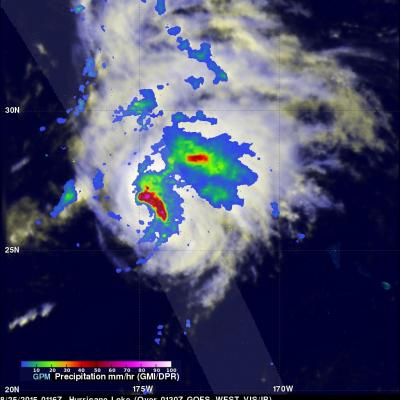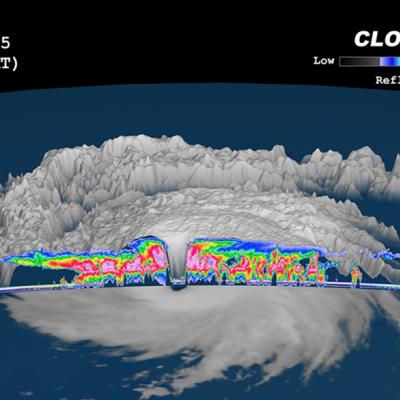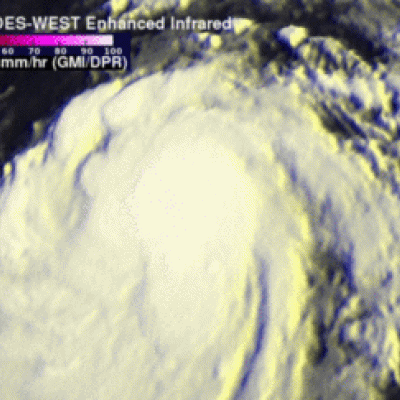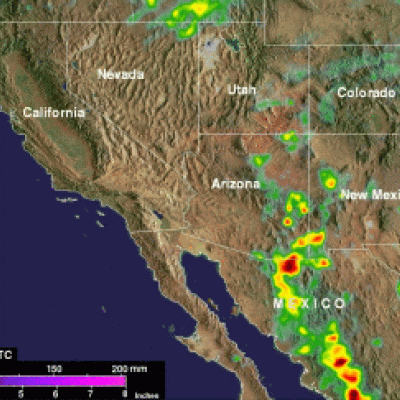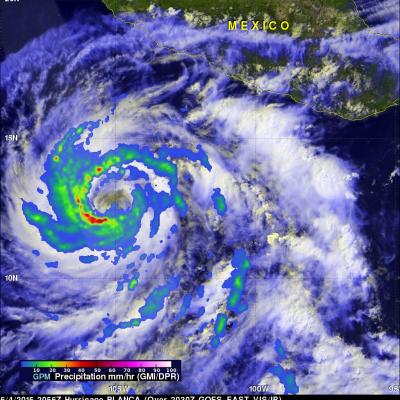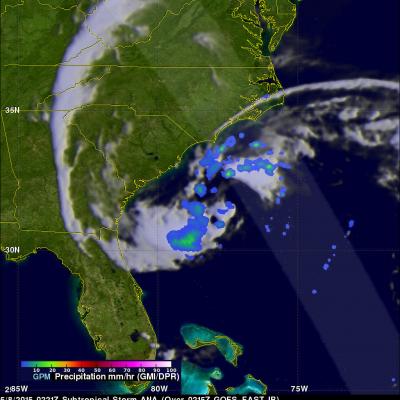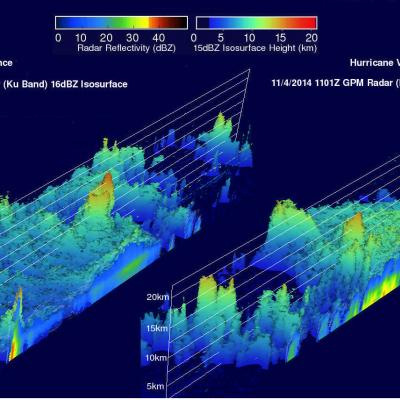Hurricane Loke Viewed By GPM
This year the Eastern Pacific Ocean continues to spawn significant tropical cyclones. Hurricane Loke formed southwest of the Hawaiian Islands on August 21, 2015 but Loke has not been a threat to Hawaii because it intensified to hurricane strength while moving well west of Hawaii over the open waters of the Pacific Ocean. The GPM core observatory satellite measured precipitation within the hurricane as it flew above the most powerful storms in the hurricane on August 2015 at 0116 UTC. GPM's Dual-Frequency Precipitation Radar (DPR) measured rain falling at over 160 mm (6.3 inches) per hour in


